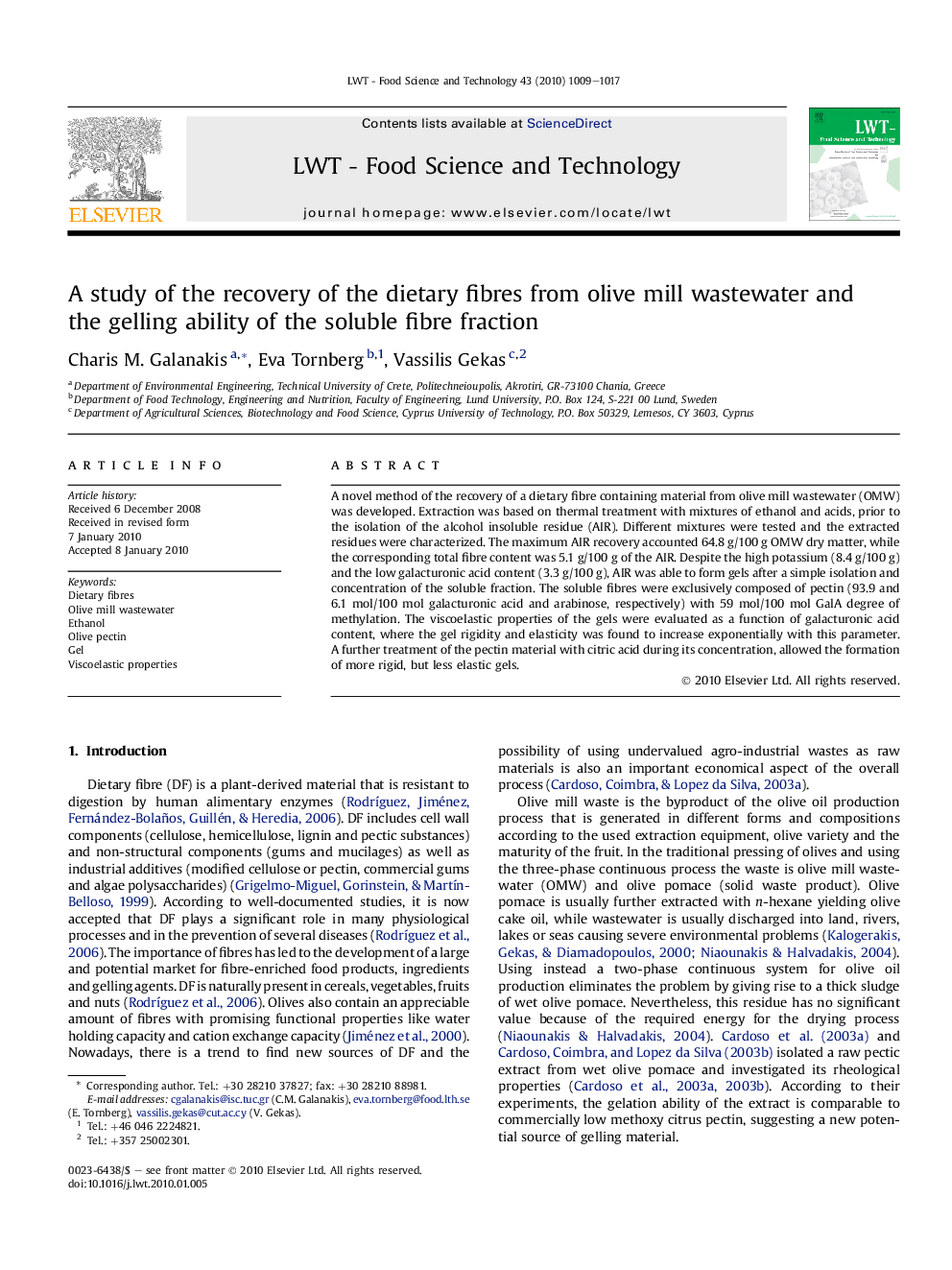| Article ID | Journal | Published Year | Pages | File Type |
|---|---|---|---|---|
| 4564506 | LWT - Food Science and Technology | 2010 | 9 Pages |
A novel method of the recovery of a dietary fibre containing material from olive mill wastewater (OMW) was developed. Extraction was based on thermal treatment with mixtures of ethanol and acids, prior to the isolation of the alcohol insoluble residue (AIR). Different mixtures were tested and the extracted residues were characterized. The maximum AIR recovery accounted 64.8 g/100 g OMW dry matter, while the corresponding total fibre content was 5.1 g/100 g of the AIR. Despite the high potassium (8.4 g/100 g) and the low galacturonic acid content (3.3 g/100 g), AIR was able to form gels after a simple isolation and concentration of the soluble fraction. The soluble fibres were exclusively composed of pectin (93.9 and 6.1 mol/100 mol galacturonic acid and arabinose, respectively) with 59 mol/100 mol GalA degree of methylation. The viscoelastic properties of the gels were evaluated as a function of galacturonic acid content, where the gel rigidity and elasticity was found to increase exponentially with this parameter. A further treatment of the pectin material with citric acid during its concentration, allowed the formation of more rigid, but less elastic gels.
